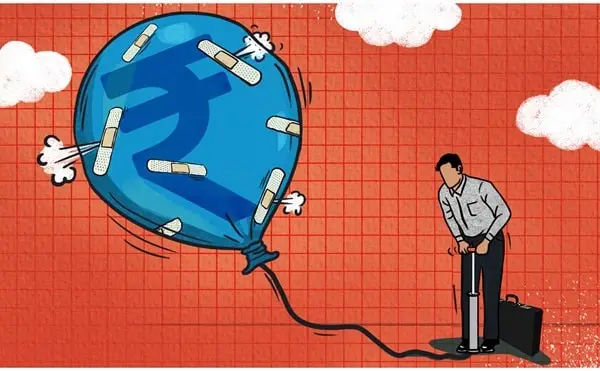The recent World Bank report has highlighted a significant challenge for middle-income countries, including India. The “middle-income trap” describes the scenario where countries, after achieving a certain income level, struggle to transition to high-income status due to various structural and economic challenges. As per the report, it could take India nearly 75 years to reach just one-quarter of the US per capita income, a projection that underscores the complexities and hurdles in India’s economic growth trajectory.
Comparative Global Outlook
In the same context, the report also mentions other major economies like China and Indonesia. China is expected to take over 10 years to achieve one-quarter of the US per capita income, while Indonesia might need nearly 70 years. These projections indicate a broader issue affecting numerous countries globally, not just India.

Factors Contributing to the Slow Progress
Several factors contribute to this protracted journey. Rapidly aging populations, increasing debt levels, geopolitical tensions, and environmental concerns are some of the primary challenges. For India, these issues are compounded by structural economic inefficiencies and the need for substantial policy reforms.
India’s Economic Ambitions and Challenges
India’s aspiration to become a developed nation by 2047, the centenary of its independence, is a laudable goal. However, achieving this milestone will require significant changes in its economic strategies. The World Bank report emphasizes the need for a “3i strategy” – focusing on Investment, Infusion, and Innovation. This strategy aims to boost economic growth, enhance productivity, and foster a conducive environment for technological advancements.
Structural Reforms and Policy Recommendations
To overcome the middle-income trap, India needs comprehensive reforms across various sectors. Enhancing educational standards, improving healthcare, fostering innovation, and creating a robust infrastructure are critical areas that need attention. Furthermore, policies promoting industrial diversification and reducing dependency on specific sectors can help stabilize economic growth.
The Role of Global Integration
Global integration and trade partnerships can play a pivotal role in accelerating India’s economic growth. Historical data suggests that countries benefiting from integration into larger economic unions, such as the European Union, or discovering significant natural resources, have managed to transition from middle to high-income status more effectively.
Conclusion
India’s path to reaching even a quarter of the US per capita income is fraught with challenges. However, with strategic policy interventions and a focus on sustainable growth, India can make significant strides towards its economic goals. The road ahead requires a concerted effort from all stakeholders, including the government, private sector, and civil society, to navigate the complexities of the middle-income trap and achieve long-term economic prosperity.

